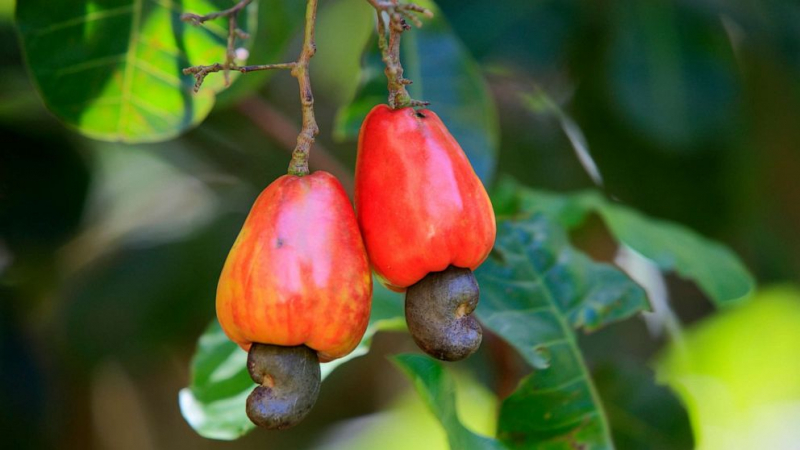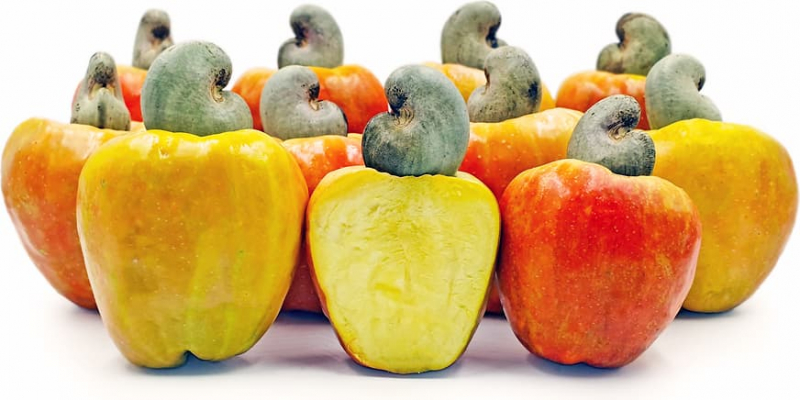Cashew
Cashew fruit, botanically classified as Anacardium occidentale, grows on evergreen trees that can reach fourteen meters in height and belongs to the Anacardiaceae family along with mangos. Also known as the Cashew apple or Marañón in Centralshew fruit is considered to be an “accessory” or “false” fruit, which means it does not encase the seeds of the plant inside the flesh. In Brazil, people usually use cashew pulp in processing fruit drinks or liquor. In addition, it appears widely in local Brazilian recipes, such as sauteed okra and stews. You will prefer the amazing taste of cashew jams, chutneys, and other desserts in Brazil.
The cashew fruit is bulbous, oval to pear-shaped, and small to medium in size, measuring 5 to 11 cm on average. The yellow flesh is stringy on the outside yet spongy, fibrous, juicy, and tender on the inside. The sweet, tropical aromas of cashew fruit are intensely fragrant and blended with an astringent flavor. Many people compare the fruit's flavor to a concoction of bell pepper, strawberries, cucumbers, and strawberries. The well-known cashew "nut" is a kidney-shaped, green seed that is enclosed in a double-hulled shell that is attached to the bottom of the fruit. It is important to note that within the shell, there are harmful substances that can cause a rash and irritation on the skin if touched, so care and prevention should be taken if handling the raw shell.







